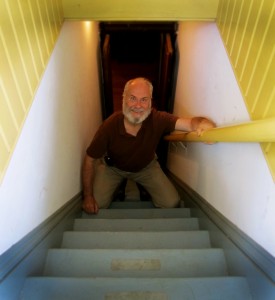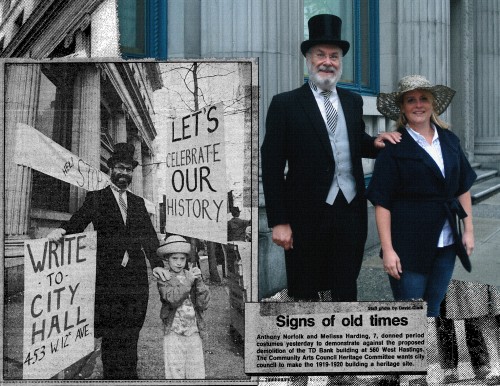By Maziar Ghaderi, storyteller & visual communicator

An Englishman found himself stranded on the strip of tundra that is our nation’s capital when an unnamed echoing call casted him to the wet sands and mild winds of the Pacific.
“I first got involved with the Heritage Committee and soon became chair,” explains Anthony Norfolk from a back room in his second home, The Roedde House Museum. With his help, the committee protected the livelihood of Vancouver’s civic history from those more inclined towards false symbols of economic progress such as shopping plazas and parking lots.
“I found myself on the board of the Arts Council and then I was kicked upstairs and became president.” During this period of 1990 to 1993, Norfolk began to take on a broader role.
After being president, Heritage Vancouver became a spin-off organization which as Anthony explains is a pretty common pattern. “Organizations tend to take a life of their own after the Arts Council incubator.”
Norfolk then went on to lead various heritage campaigns to preserve buildings in the city. Some were successful and some were not. A major win for the good guys was the campaign to halt the destruction of the Toronto Dominion Bank building at Seymour and Hastings, which is now the Wosk Centre for Dialogue.
“We introduced incentives to retain buildings; getting city hall to think differently on how to treat significant buildings that were being threatened” explains Norfolk.

He was able to organize forums to get the discussion going regarding heritage buildings and the civic arts. “One evening we drew out people that wouldn’t usually come to such things and we helped to changed the way that the downtown south was developed.”
His efforts and initiatives within the realm of civic arts were only the tip of the tundra of his countless contributions to arts advocacy in Vancouver. Norfolk, an avid supporter of ethnic artists, strives to promote their works to the Vancouver art scene. With decades of experience in immigration law, Norfolk stays well in tuned to the stories and exotic rhythms of Canada’s newest guests. One such concert included artists from the south Asian diaspora and another involved the Chinese community. “If I had it my way we’d have gone around the world!” bellows Norfolk.
“After a concert, one spectator leaned forward and said: no one could bring something like this about but the Arts Council.” Enough said.
Norfolk believes that an evolution of a city includes the recognition of identifiable groups that deserved the opportunity to show what they can do. “This is an essential form of human expression. [The Arts Council’s] ideas that spread across the province were designed to give an opportunity to share artistic expression from those who normally wouldn’t have that facility,” explains Norfolk.
When I tried to ask him to categorize the arts styles and depositions that suit his fancy, the man remained ‘un-catergorizable’. “What kind of art gets my attention? Well, that ‘definition as a limitation’ doesn’t appeal to me at all,” says Norfolk jokingly. One place that comes to mind is the Victoria and Albert Museum in London due to its broad reach and depth. “[The VA’s collection] ranges from fine art to designs of everyday things; [in regard to styles] I tend to remain an open-ended book. The world is our oyster when it comes to art.”